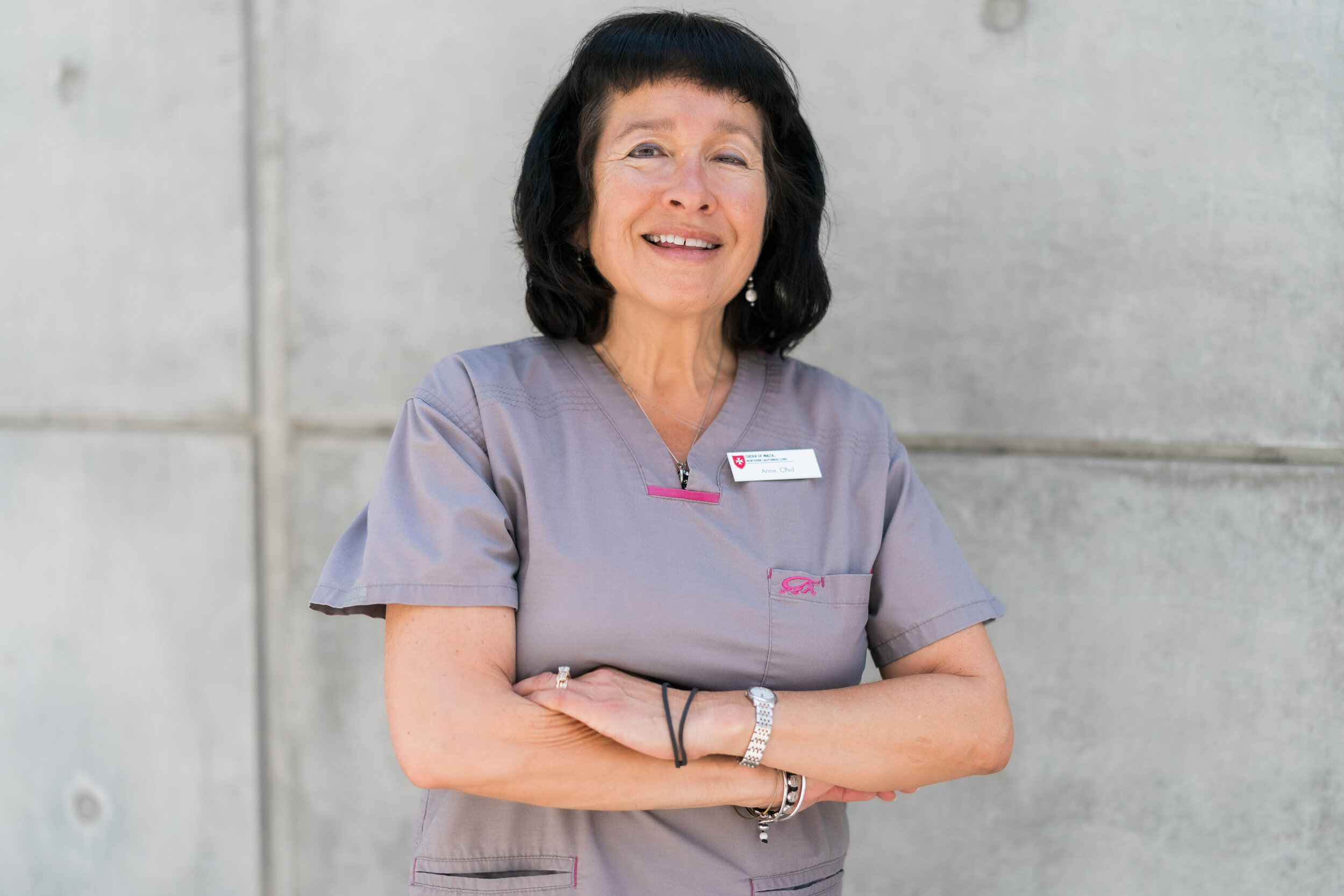Healing a Wound - A Patient's Story
He came in for his first appointment, sitting down and hunched over a clipboard as he filled out the new patient registration forms. When he was bent over, at first all I could see was a matted tangled mane of hair, his hands and knees as dirty and rough as the beat-up deck of his skateboard propped up beside him. Next, I saw a couple ears on a big gray head by his side and realized there was a dog in the lobby! I walked over to address this, to quickly let our patient know that we can’t have an animal in the Clinic (other than a service animal). Then I flinched as I saw a large pit bull look up at me and begin to get up from its haunches. The momentary flight or fight response pounding in my heart was quickly reassured by a gentle nuzzle against my hand, soon covered with wet velvety kisses a good and faithful dog gives. I then led the dog outside, tail wagging and thumping non-stop against my leg – her owner and I tied her up at a tree right where our staff could see her from the lobby window. As I provided a bowl of water, I felt ashamed how I had judged them, wondering how many times Petunia and her owner Luke were treated or avoided solely based on their appearance.
Luke came from out of state and recently had been living on a boat for the past few months, somewhere in Alameda/Oakland. He was a bit vague about where he was staying and gave his mother’s address on the paperwork. Luke hadn’t worked regularly in many months; it appeared he was getting by with some very odd jobs and bartering for his needs. He had found us online when a disturbing wound on his leg, which was growing and wasn’t healing, finally led him to seek medical attention.
Dr. Gunderson treated Luke and obtained a specimen sample for a wound culture. We don’t do this very often at the Clinic, however, we had the supplies. I ran the sample up to Alta Bates Summit laboratory, making it there only minutes before the 4:00 p.m. lab cutoff for the day. Before Luke left, his wound was cleaned and bandaged up, and we gave him a bag of fruit and some of the protein bars we seem to always have on hand. Taking the bag, he thanked us, and added not to worry that he and Petunia had enough to eat “regularly.”
The laboratory culture found Methicillin-resistant Staphylococcus aureus, more commonly known as MSRA, a staph infection resistant to many antibiotics. In an in-patient hospital setting, it can be very contagious and spread rapidly. A series of antibiotics were prescribed and Luke was asked to return to the Clinic for a follow-up to check on his wound.
On his second visit, Luke confirmed that he picked-up his prescription and was taking the medication. Dr. Diaz and Delza, RN and FNP student, spent time respectfully and modestly helping Luke clean himself up section-by-section with body wipes. He had layers of grime that came from living on a boat with infrequent shower/bathing opportunities. And of course, Dr. Diaz and Delza inspected and attended to his wound. As this appointment visit took some time, I went out to briefly to check on Petunia, faithfully and patiently waiting for her master, and gave her some dog treats. I noticed her eyes were light gray/blue like Luke’s.
We ordered additional labs and another follow-up visit, a third appointment for this patient, but Luke was a no-show. Repeated calls/emails went unanswered. We can only assume that he received the care that he needed at the time. This happens with some patients we see in their 20s and early 30s, like Luke, who come to the Clinic for acute or immediate care rather than the ongoing regular care for a chronic condition or someone who is older might need.
Luke could have ended up in the emergency room, facing a mountain of bills, or facing a truly serious life-threatening situation if the infection was left untreated. His story, like many of our other patients, is complex, never easy and requires time and multiple Clinic resources and resourcefulness.
Later Dr. Diaz shared that the boat Luke lived on was actually Luke’s own boat, one that Luke purchased when times were better and he worked full time, a carpenter by trade. Our patients often leave a lasting impression, like Luke as shared here. And about how almost dumbstruck I was upon hearing the words and reflecting on “a carpenter” coming to the Clinic.
Our Lord came to us in his time of need and we healed his wounds.
Is he not the carpenter’s son? Is not his mother named Mary? – Matthew 13:55
‘For I was sick and you cared for me.’ – Matthew 25:36
Names and some details have been changed.
By Anne Brussok, DM


